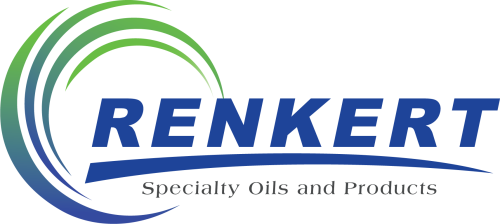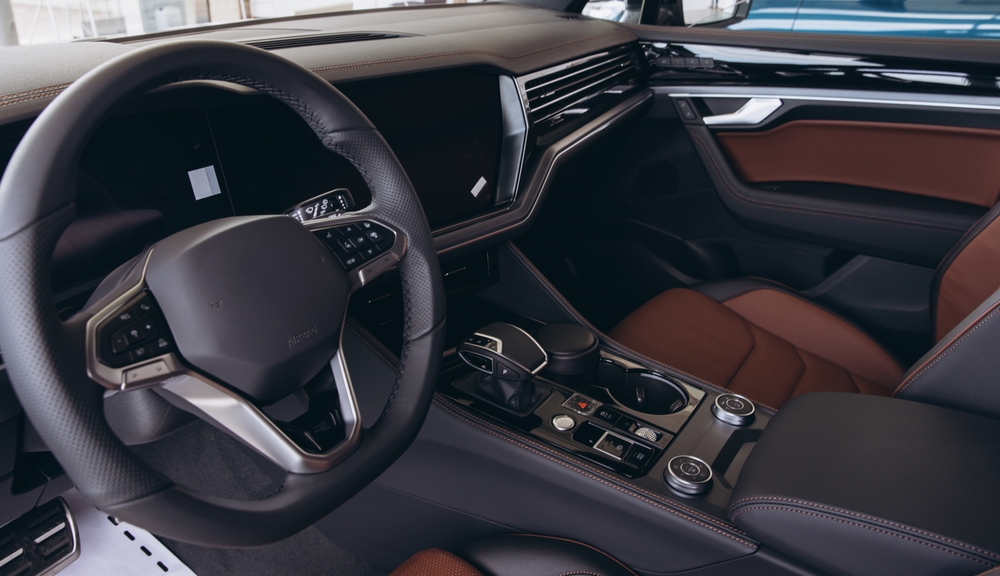Automotive plastics face tougher targets every year—cleaner cabins, longer lifespans, tighter color specs, and fewer defects on the line. The quiet enabler? Choosing the right process oil. Questions? Contact us.
When you specify paraffinic, low-volatility process oils for automotive TPE (thermoplastic elastomer) production, you make it easier to minimize interior emissions, reduce fogging, control odor, and keep parts flexible for the long haul.
Below is a simple list of how our paraffinic process oils contribute to performance and production.
Suzanne Kingsbury, Director of Quality
Related Renkert reads: Why Group II High-Viscosity White Oil Is the Future of Automotive Interiors and 5 Problems an Inferior Process Oil Can Cause for Automotive Parts Manufacturers.
Paraffinic Process Oils for Automotive Plastics
Renkert’s portfolio for automotive plastics includes paraffinic, technical white mineral oils and low-volatility (LV) process oils used as plasticizers and processing aids in TPE, such as SEBS/SBS*, EPDM (ethylene propylene diene monomer), and related blends.
These Group II–type oils are highly saturated and very low in aromatics and sulfur, which supports water-white color, low odor, and strong oxidative stability, key attributes for interiors.
*SEBS = styrene-ethylene-butylene-styrene (a hydrogenated styrenic block copolymer); SBS = styrene-butadiene-styrene (an unsaturated styrenic block copolymer)
1. Automotive Plastics Pass Tougher VIAQ and Fogging Tests
Vehicle interior air quality (VIAQ) can be compromised by process oils that are too lightweight and volatile to resist evaporation on hot summer days. Paraffinic LV oils help minimize the condensation of light oil substances that cause windshield film, a.k.a. “fogging.”
Cabin standards and practices you’ll hear in qualification include SAE J1756 for fogging and ISO 12219 for interior air quality. Using lower-volatility, high-purity oils makes it easier for soft-touch trim parts and compounds to meet these benchmarks.
The Other Problem: Volatile Organic Compounds
Preventing fogging is part of the larger battle for improving VIAQ. A UL white paper notes that vehicles can contain 30 to 250+ separate VOCs in total concentrations up to 14,000 µg/m³. (These do not come from Renkert’s pure process oils, but rather from other materials commonly found in automotive plastics.)
“One of the primary sources of pollutants in vehicle interiors is the materials used in the manufacturing process. This includes plastics, adhesives, textiles, and paints, which can emit VOCs over time. These emissions, commonly referred to as “off-gassing,” can persist for months or even years after the vehicle is manufactured.” — Michael Scheytt, Group Product Manager, AVL Analytical Technologies
2. Cleaner Look: Water-White Color for Precise Matches
Interior programs demand light grays, beiges, and whites with no yellow cast.
Paraffinic technical white oils—clear, colorless, and essentially odorless—help maintain color targets and a uniform appearance across soft-touch overmolds, skins, and adjacent rigid components.
3. Lower Odor from Molding to End-Of-Life
Because paraffinic oils are highly saturated and refined, they help keep background odor in check, supporting brand perception and comfort in the cabin during the sensitive “new car” period.
Many OEM and lab protocols (e.g., ISO 12219 family) explicitly screen for odor and VOC contributors, so using cleaner oils up front reduces trial-and-error.
4. UV and Heat Stability That Keeps Parts from Yellowing Or Getting Brittle
Sunlight and cabin heat gradually age interiors.
Paraffinic oils’ high saturation and low sulfur support oxidative and UV stability, helping compounds retain softness and appearance over years of service—especially in instrument panels, consoles, door trims, and skins.
5. Under-Hood Flexibility That Lasts
Where elastomeric parts (e.g., EPDM hoses, seals, gaskets) are exposed to heat cycles, you need plasticizers that won’t migrate and volatilize away.
Paraffinic LV oils resist loss at temperature, which helps prevent stiffening or cracking and supports longer service intervals.
6. Smoother compounding and molding = fewer defects
Stable viscosity and low volatility support predictable melt flow and mixing, lowering risks of bleed/bloom, surface haze, or deposit-related downtime.
That translates to steadier throughput and less rework on the line, exactly what process engineers want from a “quiet” additive.
7. Regulatory Confidence For Today And Tomorrow
ISO 12219 methods (whole-vehicle and component-level) give programs a common reference for VOCs and aldehydes.
Selecting cleaner, low-volatility oils up front helps you clear today’s gates and reduces the risk of late-stage surprises during PPAP or engineering changes.
8. One Paraffinic Family, Many Automotive Plastics Applications
From SEBS and SBS TPEs to EPDM and PP-based compounds, a single set of paraffinic LV oils can cover multiple formulations—helping you reduce SKUs while keeping your target feel, flexibility, and surface quality.
Quick Buyer’s Checklist For Paraffinic Process Oils In Automotive Plastics
- Low volatility to help with VIAQ, eliminate fogging, and maintain a long-term softness for “soft-touch” interior surfaces.
- Water-white color & low odor to support light interior palettes and trim harmony.
- High saturation/low sulfur (typical of API Group II refined stocks) for oxidation stability and clarity.
- Tight viscosity control for consistent mixing/molding and fewer rejects.
Want more context? See our posts on high-viscosity white oil for automotive interiors and on risks of inferior process oils in automotive parts.
Why Renkert Oil For Automotive Plastics: “We Put the ‘Soft’ in ‘Soft-Touch’”
At Renkert Oil, we specialize in process oils ideal for automotive TPEs. Our paraffinic technical white oils and low-volatility process oils for interior and under-hood environments offer:
- Softer-touch moldings: Our LV process oils resist motility to keep interior surfaces softer, longer—it’s why we say “we put the ‘soft’ in ‘soft-touch.’”
- Portfolio fit: Paraffinic process oils aligned with interior VOC/odor goals and color-critical programs.
- Application support: Guidance for SEBS/SBS TPEs, EPDM, and PP compounds to manage fogging, odor, feel, and surface finish.
- Quality & consistency: Strict quality control discipline, clear specs, and dependable logistics to keep trials and launches on schedule.
- Proof in practice: We’ve helped buyers move to lower-volatility oils that cut fogging risk while protecting throughput and part appearance.
If you’re qualifying materials now or planning a refresh in the coming year, our team can recommend the paraffinic LV grades that match your polymer, durometer, and processing window.

